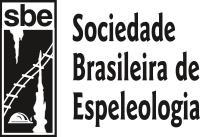Antarctic active volcanoes can disperse pyroclastic minerals at long distances, transporting nutrients and microorganisms to the surrounding glacial environment. The sedimented volcanic materials – called tephras – may interact with glacier ice and produce a unique environment for microbial life. This study aimed to describe the microbial community structure of an Antarctic glacier ice with tephra layers in terms of its taxonomic and functional diversity. Ice samples from Collins Glacier (King George Island) containing tephra layers of Deception Island volcano were analyzed by a whole shotgun metagenomic approach. Taxonomic analysis revealed a highly diverse community dominated by phyla Bacteroidetes, Cyanobacteria and Proteobacteria. The dominant genera were Chitinophaga (13%), Acidobacterium (8%), and Cyanothece (4%), being all of these known to include psychrotolerant and psychrophilic strains. Functional diversity analysis revealed almost complete carbon, nitrogen and sulfur biogeochemical cycles. Carbohydrate metabolism of the ice-tephra community uses both organic and inorganic carbon inputs, where photosynthesis plays an important role through CO2 fixation. Our results also demonstrate a biotechnological potential for this glacial community, with functional annotations for styrene degradation and carotenoid pigment genes. Future metatranscriptomic studies shall further reveal the active strategies and the biotechnology potential of extremophiles from this unique ice-tephra microbial community.
MICROBIOLOGY • An. Acad. Bras. Ciênc. 94 (suppl 1) • 2022 • https://doi.org/10.1590/0001-3765202220210621
